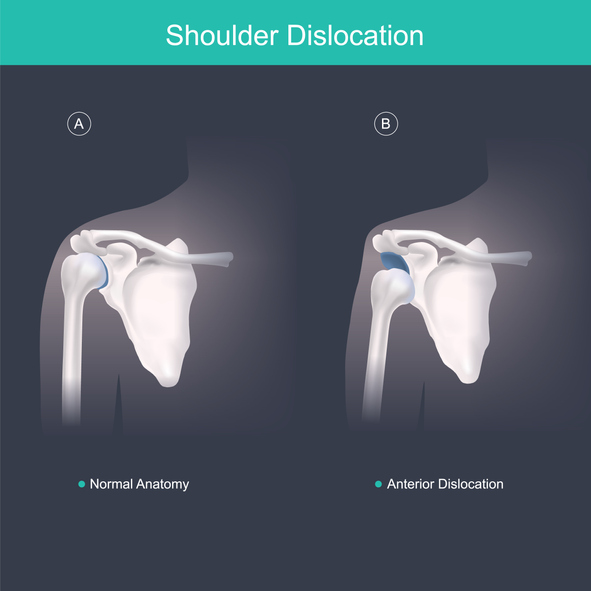What is a Shoulder Dislocation?

The shoulder joint is naturally unstable due to its great mobility. This instability makes the joint susceptible to dislocation, where the humeral head and glenoid cavity are separated. This can occur in any direction: backward, forward, or downward.
Causes of shoulder dislocation can include:
- Fall
- direct impact
- Accident
How is Shoulder Instability Related to a Dislocated Shoulder?
Generally, during a dislocation, the shoulder ligaments are weakened and stretched, making the shoulder joint unstable. Patients who participate in contact sports such as football or basketball are particularly susceptible to recurrent shoulder dislocations. Similarly, overhead movements, common in tennis or ball sports, can lead to recurring dislocations and shoulder instability.
What are the Symptoms of a Shoulder Dislocation?
Common symptoms include:
- Pain at the onset of the injury, often accompanied by a popping sound
- Pain radiating into the arm
- Restricted movement
- Arm or shoulder numbness
- Shoulder weakness
- Visual deformity of the shoulder joint
Diagnosis of Shoulder Dislocation
The diagnosis of shoulder dislocation is made clinically, but associated injuries must always be clarified. An X-ray alone is not sufficient for this. A magnetic resonance imaging (MRI) and/or a computed tomography (CT) scan are mandatory.
Treatment of Shoulder Dislocation
In athletic patients, surgical stabilization is necessary after a shoulder dislocation, as otherwise the probability of another dislocation is very high.
The torn capsule and glenoid labrum are anatomically fixed using arthroscopic “all-inside” technique with special suture anchors to prevent a recurrence of dislocation.
If there is a bony defect in the shoulder joint socket that exceeds a certain size, then a bony glenoid reconstruction must be performed. For this, a bone process from the shoulder is used and screwed into the defect (LATERJET procedure). Alternatively, a piece of bone from the iliac crest can also be used.
Aftercare
Aftercare is of great importance. Immediately after the operation, the shoulder is immobilized. Physiotherapy is absolutely essential in the post-operative phase to prevent adhesion of the gliding layers. A continuous increase in load is achieved through muscular stabilization exercises. Particular caution is advised in contact sports after a shoulder dislocation.

Dr. Mark Schurz
CONTACT